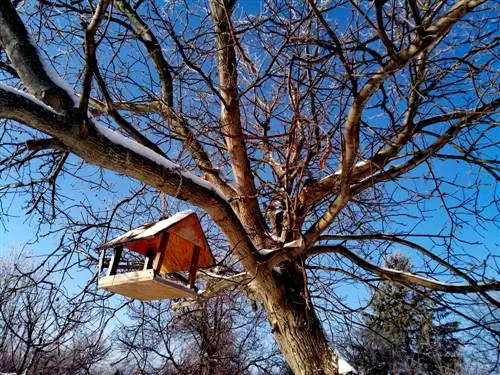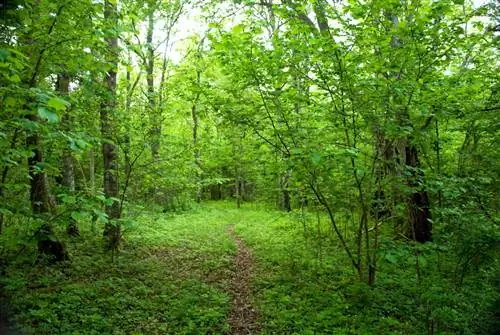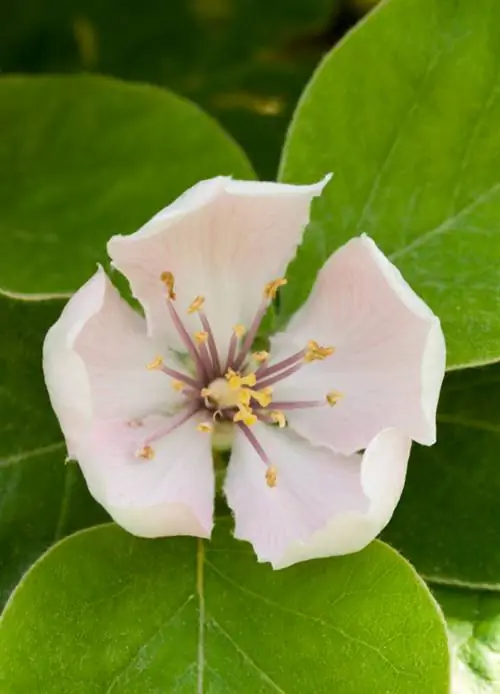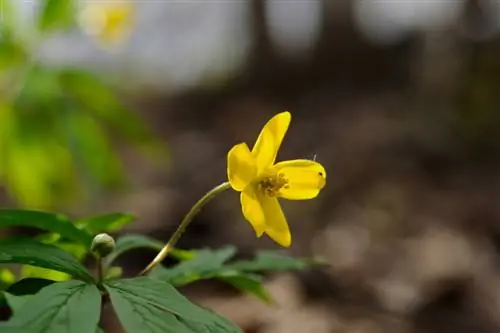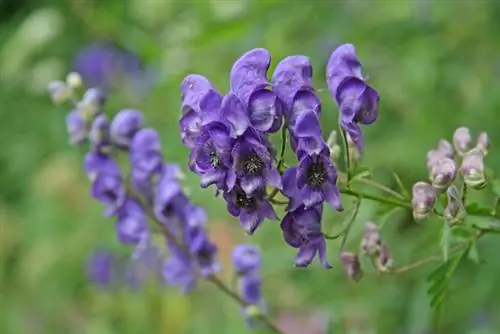- Author admin [email protected].
- Public 2023-12-16 16:46.
- Last modified 2025-01-23 11:21.
The walnut tree has certain special features in every season - including winter. Our guide informs you about the special characteristics of walnuts in the cool season.
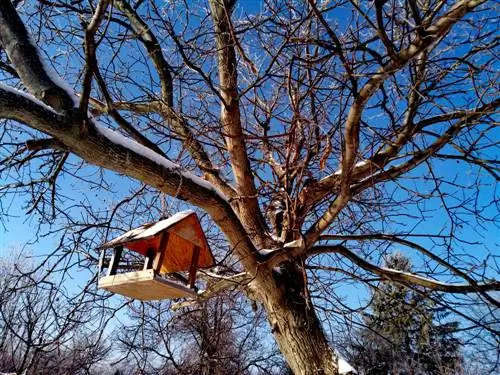
What does a walnut tree look like in winter and how do you protect it?
The walnut tree in winter shows silvery bark and bare, gnarled branches. In late winter it forms new buds for spring blooms. Frost-sensitive young trees need protection by overwintering in bright, frost-free rooms and older trees benefit from mulch, mats and garden fleece.
Optical characteristics of the walnut in winter
From a visual point of view, the walnut tree is particularly striking in winter due to the following points:
- The bark of the walnut takes on a silvery color. It can almost turn white (no, not just when it snows, but in general!).
- The walnut is completely bare, so its gnarled branches really show off. Some hobby gardeners find these branches unattractive, while others believe that the gnarliness gives the tree character.
The flowering cycle begins in late winter
After the walnut harvest in autumn, the cycle in terms of flowering for the plant soon begins again: in late winter, the walnut tree forms new buds, which ultimately produce pretty, but tend to be unspectacular, flowers in spring.
By the way: If the winter was long and hard, flowering often starts even later than is already the case with walnut trees.
He alth aspects of walnuts in winter
The fact is that the walnut tree is a frost-sensitive plant. Serious frost damage can occur, especially in severe or excessively long winters.
You must protect young trees from frost, otherwise they have little chance of survival. Fortunately, overwintering the growing trees is relatively easy: it is usually sufficient to place the young tree in a pot or bucket in a room that is bright and safe from frost.
Water only moderately, but make sure that your young walnut tree is not in completely dry substrate. The tree sheds its leaves, you shouldn't be surprised.
Only when a walnut tree becomes woody is it able to survive the winter outdoors. However, we advise you to continue to protect your walnut from frost and possible damage, even outdoors. For this purpose we recommend
- Mulch and mats on the ground
- Fleece and mats to protect the trunk as well as
- wrapping the crown with garden fleece (if the frost lasts for a long time or the winter is particularly harsh)

